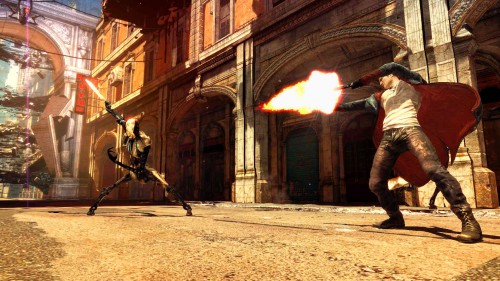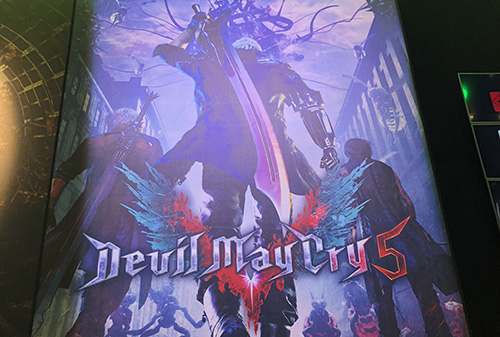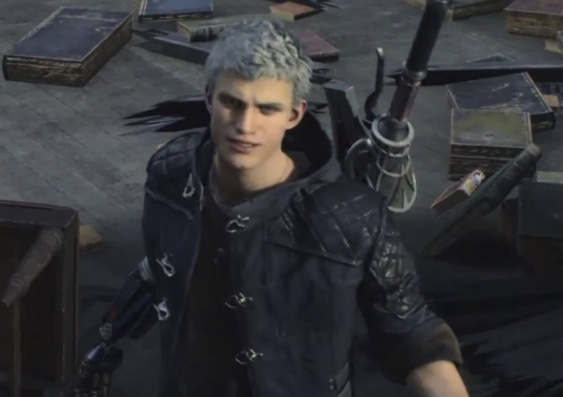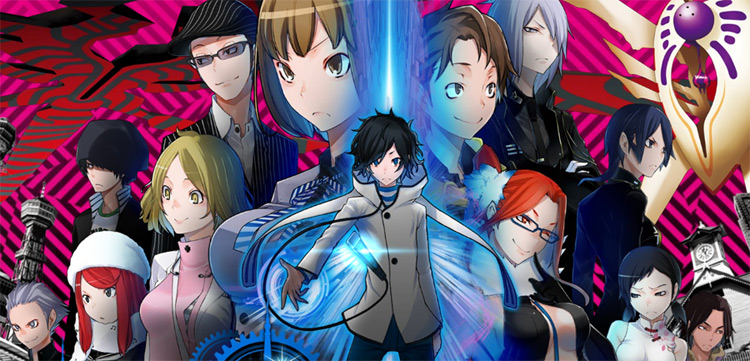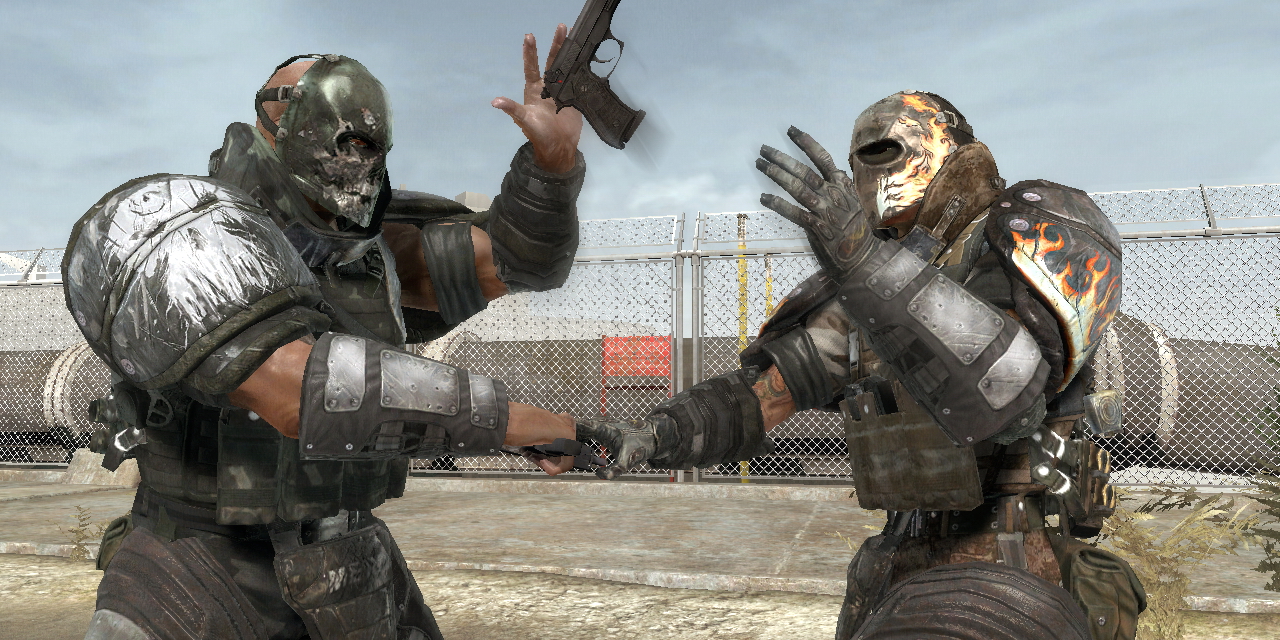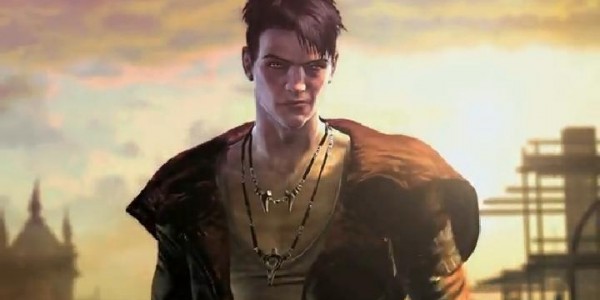
It’s fair to say that there’s been a lot of fan controversy over DmC: Devil May Cry, which is ostensibly a reboot of the franchise, eschewing the silver-haired bad-boy protagonist Dante for a younger, dark-haired and somewhat emo-looking dude with the same name. Capcom kind of got away with replacing Dante before in Devil May Cry 4, but that was mostly because Nero looked identical to Dante, and then you later got to play as Dante for the rest of the game anyway. But new developers Ninja Theory are playing with fire. It’s a gamble that could only succeed if the gameplay, story and design were strong enough to truly revitalise the series. From what I’ve played so far, DmC may just be on the right track.
The code I played was from Captivate, and showed Dante caught in the alternate dimension of ‘Limbo’ in a city. This realm is a lot like the Otherworld from Silent Hill, in that it seems to be a side-step from reality. Buildings and locations seem generally the same, but the people have all disappeared, glimpsed vaguely as shadows in Limbo. At times, the city breaks apart, distends and twists itself to hinder Dante’s progress. Frequently, giant neon words hang in the background, with positive messages like, ‘KILL DANTE’. The overall effect is less gothic than past entries in the series, with a kind of hipster Instagram filter over everything, but every bit as stylistic.
Of course, there are plenty of baddies to combo-kill your way through in DmC as well. Slicing and dicing feels familiar, as Dante once again has access to his demonic sword, along with his twin pistols, Ebony and Ivory. You can switch between them for long range and short range attacks, or simply combine the two to up your Style rating, which also returns. Holding down one of the triggers will allow Dante to pull off heavier versions of his attacks, similar to God of War, and you can of course still launch enemies into the air and juggle them with your pistols, or join them up there for some one-on-one slashing.
In a move reminiscent of Nero’s arm Devil May Cry 4, Dante has a grappling hook which can be used for a number of things. In combat, it can be used to pull Dante to enemies, or send enemies flying towards Dante. In the game’s many platforming sections, it can be used to pull out moving ledges from walls, and then pull Dante towards them. Dante also has access to his traditional double jump, and a dash move which is necessary to get across some of the larger gaps.
Towards the end of the demo, Dante had to charge through a church that continually shattered apart and stretched itself into the horizon, requiring lots of long jumps and careful timing. In sections like this, the entire city seems to be alive, and against Dante, throwing everything it has against you. This is also where the most imagination can be seen in the game’s design, and where I believe it holds the most promise.
A stranger addition to the series are the demonic security cameras stationed around Limbo, which Dante must avoid. These giant eyeballs don’t necessarily force the game into stealth sections, but rather present further objectives for Dante, as he must first find alternate routes to take out the cameras (in amusingly violent cut-scenes) before being able to progress to the next area.
From what I’ve played, DmC may not look like it at first, but it is definitely a Devil May Cry game through and through. The stylistic combat and strange platforming sections you’ve come to love are back, but with little enhancements to make things interesting. The decision to reboot seems to have been made not for a drastic gameplay redesign, but for an opportunity to try something different with Devil May Cry‘s basic premise, and the approach Ninja Theory have taken with DmC has certainly peaked my interest. Look for DmC to hit stores next January.


